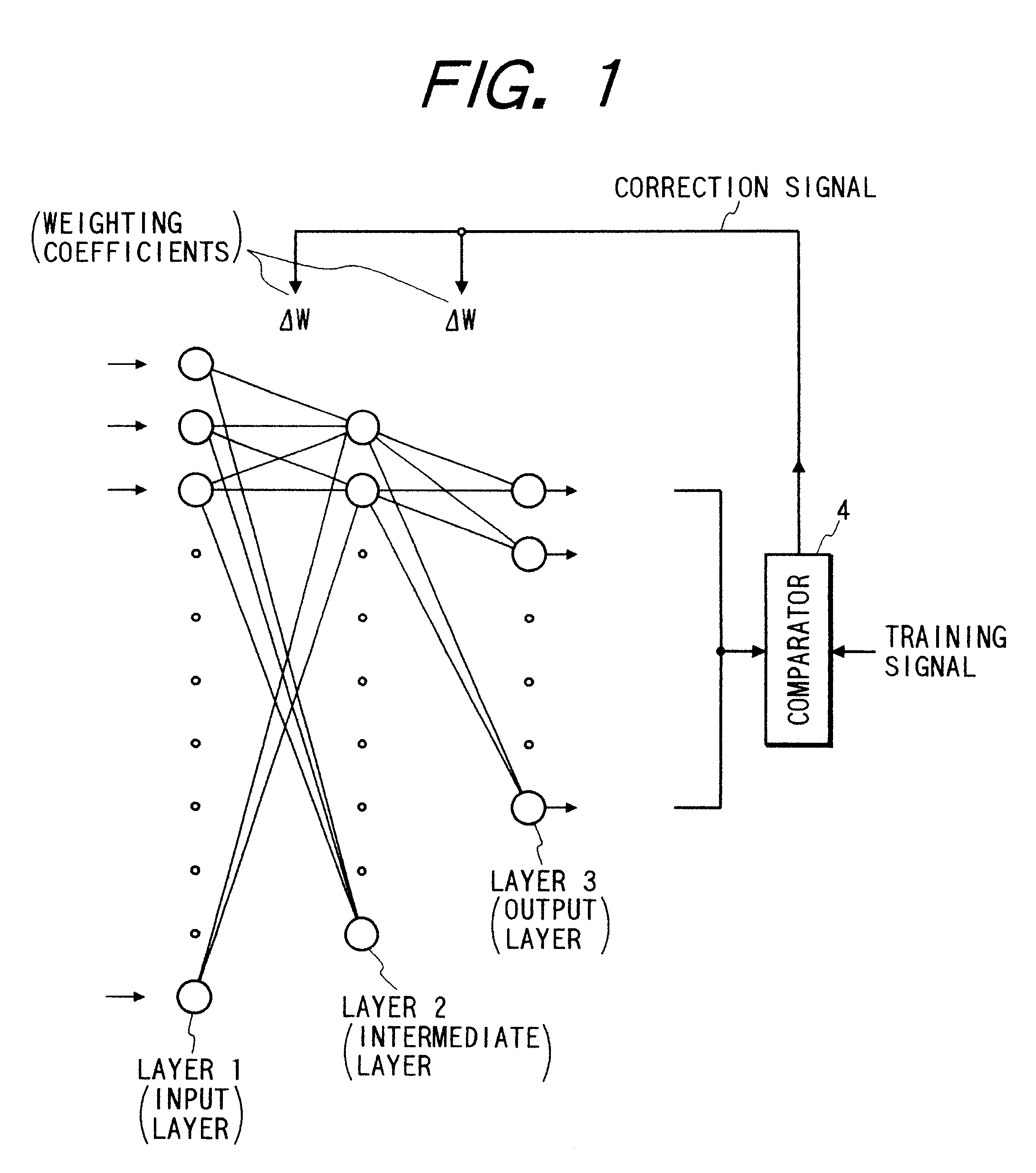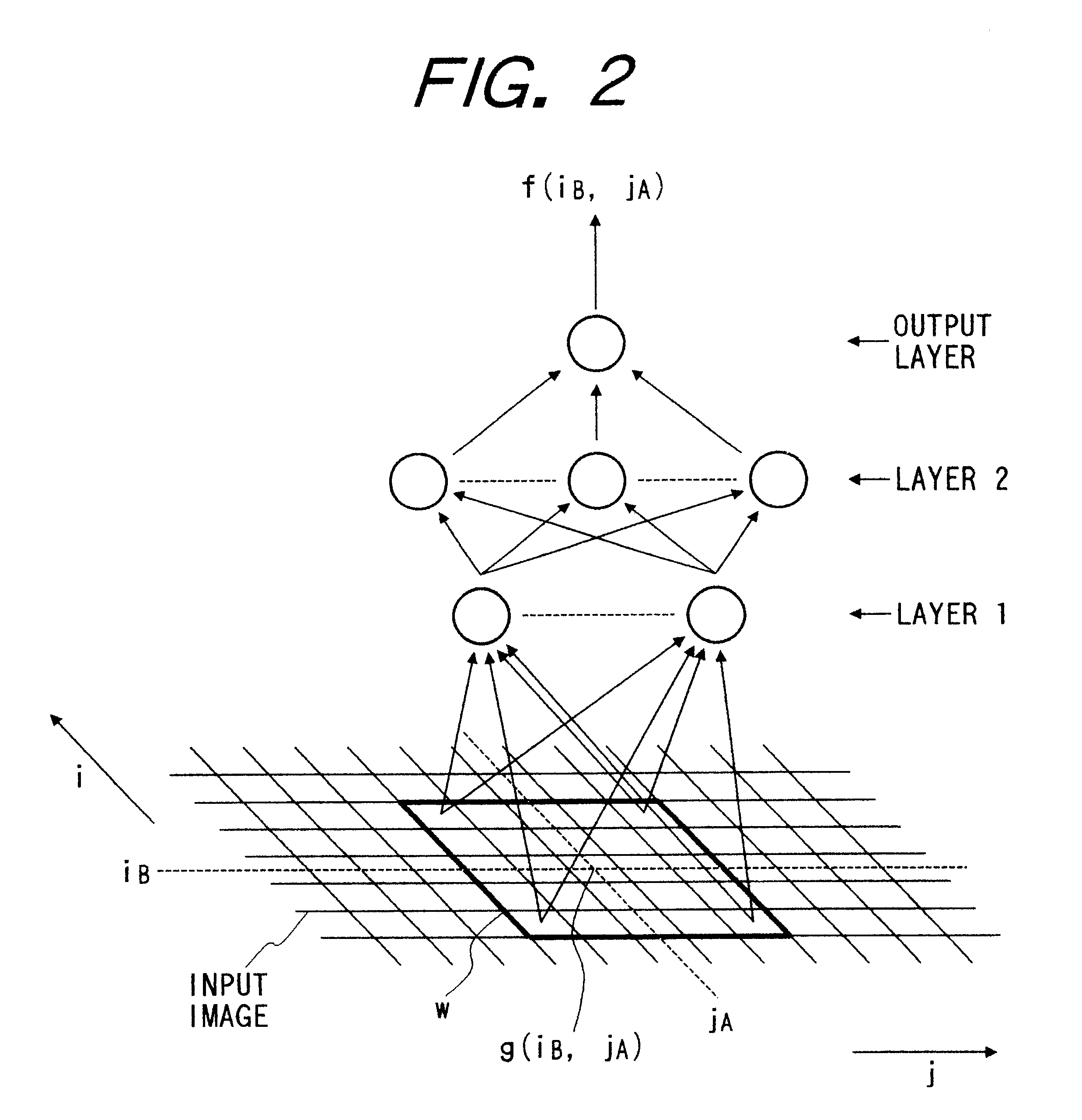Neurofilter, and method of training same to operate on image data such as to discriminate between text and picture regions of an image which is expressed by image data
a filter and image data technology, applied in the field of neurofilters and methods of training same to operate on image data, can solve the problems of difficult filter parameters setting, inability for other individuals to design filters, and inability to achieve optimum
- Summary
- Abstract
- Description
- Claims
- Application Information
AI Technical Summary
Benefits of technology
Problems solved by technology
Method used
Image
Examples
Embodiment Construction
Before describing embodiments of the invention, an example of a neural network which can be used to implement a neurofilter will be described, referring to FIG. 1. FIG. 1 illustrates the condition in which the neural network is being trained to provide a desired relationship between an input signal supplied thereto and a resultant output signal. The input signal is supplied to the neural network as successive sets of parallel signal values. In the case of processing image data for example, these signal values may be respective values of picture elements within a local region of the image, i.e. within a scanning window, which is successively stepped across an array of picture element values representing an image. It will be assumed that a single output value is produced in response to each such set of input signal values, i.e. the neural network produces an output signal that is a series of these output values. As shown, the neural network example is a multi-layer type, and consists ...
PUM
 Login to View More
Login to View More Abstract
Description
Claims
Application Information
 Login to View More
Login to View More - R&D
- Intellectual Property
- Life Sciences
- Materials
- Tech Scout
- Unparalleled Data Quality
- Higher Quality Content
- 60% Fewer Hallucinations
Browse by: Latest US Patents, China's latest patents, Technical Efficacy Thesaurus, Application Domain, Technology Topic, Popular Technical Reports.
© 2025 PatSnap. All rights reserved.Legal|Privacy policy|Modern Slavery Act Transparency Statement|Sitemap|About US| Contact US: help@patsnap.com



